Place and identity are intersecting themes of contemporary art that are often explored by artists and curators. In “Panagbo: Encounters with Tradition”, curator Marika Constantino and artists from Capiz transport the audience to the fishing community of their province and introduce them to uga (dried fish) in a different light.
Constantino points out that “Capiz enjoys an 80-kilometer coastline aside from the numerous fishponds that dot the province. In fact, Roxas City is blessed to be contiguous to the Sibuyan Sea and the economic benefits from its rich marine life have been quite beneficial. This wealth from the sea has not only created livelihood to many but has also enriched the way of life of Capiznons as a whole.” A short documentary provides the audience with a history of the fish drying tradition with actual footage of the process. EyeCan Creatives (Aina Shane Martinez, Hazel Fegarrido, Maru Alayon) visited the villages and interviewed the fishermen. Historian, Christian Acevedo is also seen in the video describing how Capiznon wanted to consume fish all throughout the year, hence the discovery of this method of preservation turned into a staple of every Capiznon’s meal.
Participating artists utilized different approaches to interpreting the theme of the exhibition while keeping their individual identities. Setting up the audience in a space evocative of the fishing villages are the functional sculptures by Jonard Villarde with each piece created in the likeness of a planter. In each planter are vegetables often served with uga such as chili, shallots, and pechay. In the middle of the exhibition is John Alaban’s installation “Daing Maghapon“. Alaban created a replica of a drying bed inside the museum, reminiscent of the readymade. The very act of bringing an object to an exhibition space and putting a different meaning to the object is art. In this case, the installation is proof of the toil of fishermen catching each inch of sunlight they could, and turning the kapil (bamboo panel) to every direction facing the sun is an arduous task. Providing the ambient to the space is “Tagítì Nga Ga Bítì-bítì sa Kapa-ang / The Sizzling Warmth of Humidity”, a sound work by Animo.
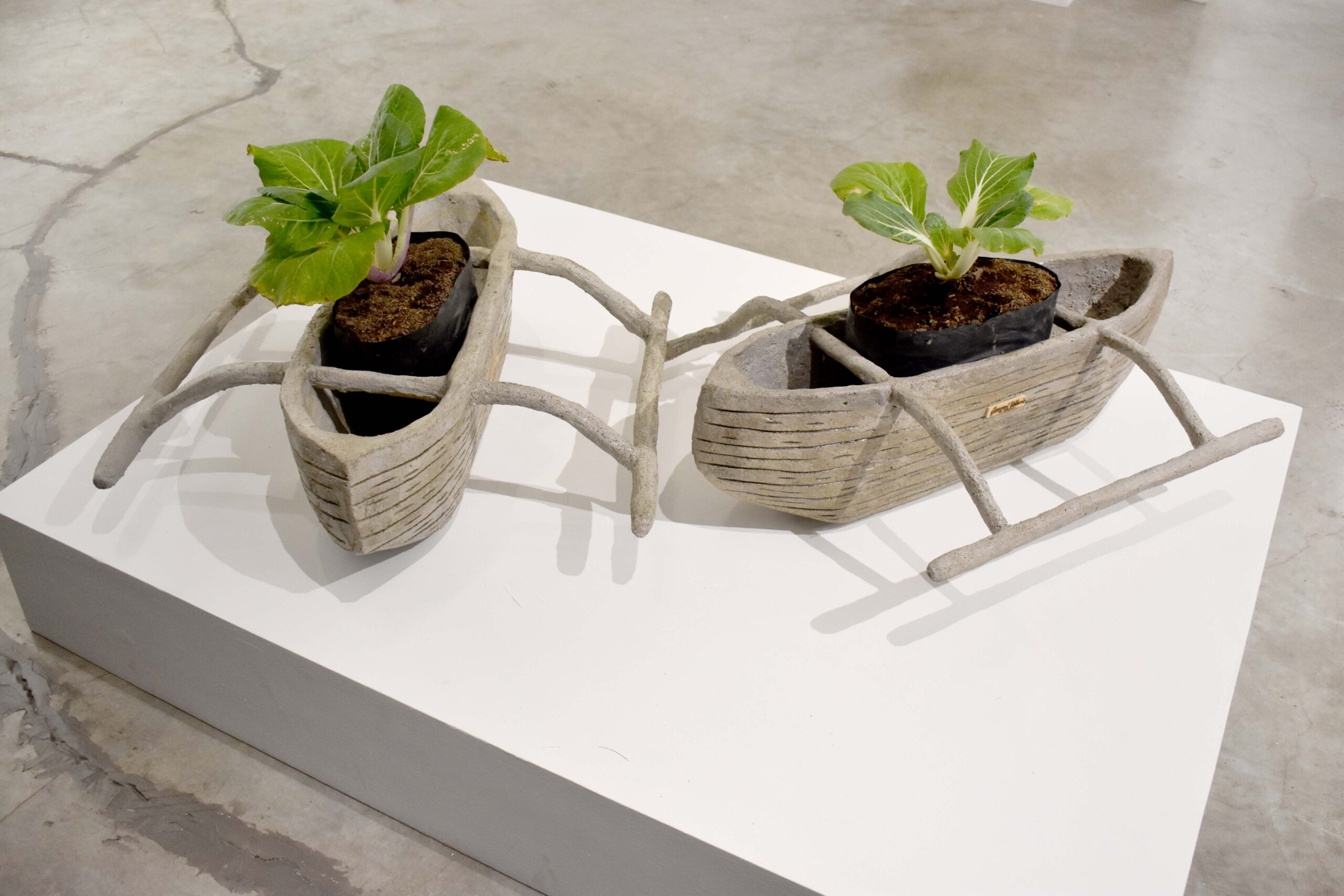
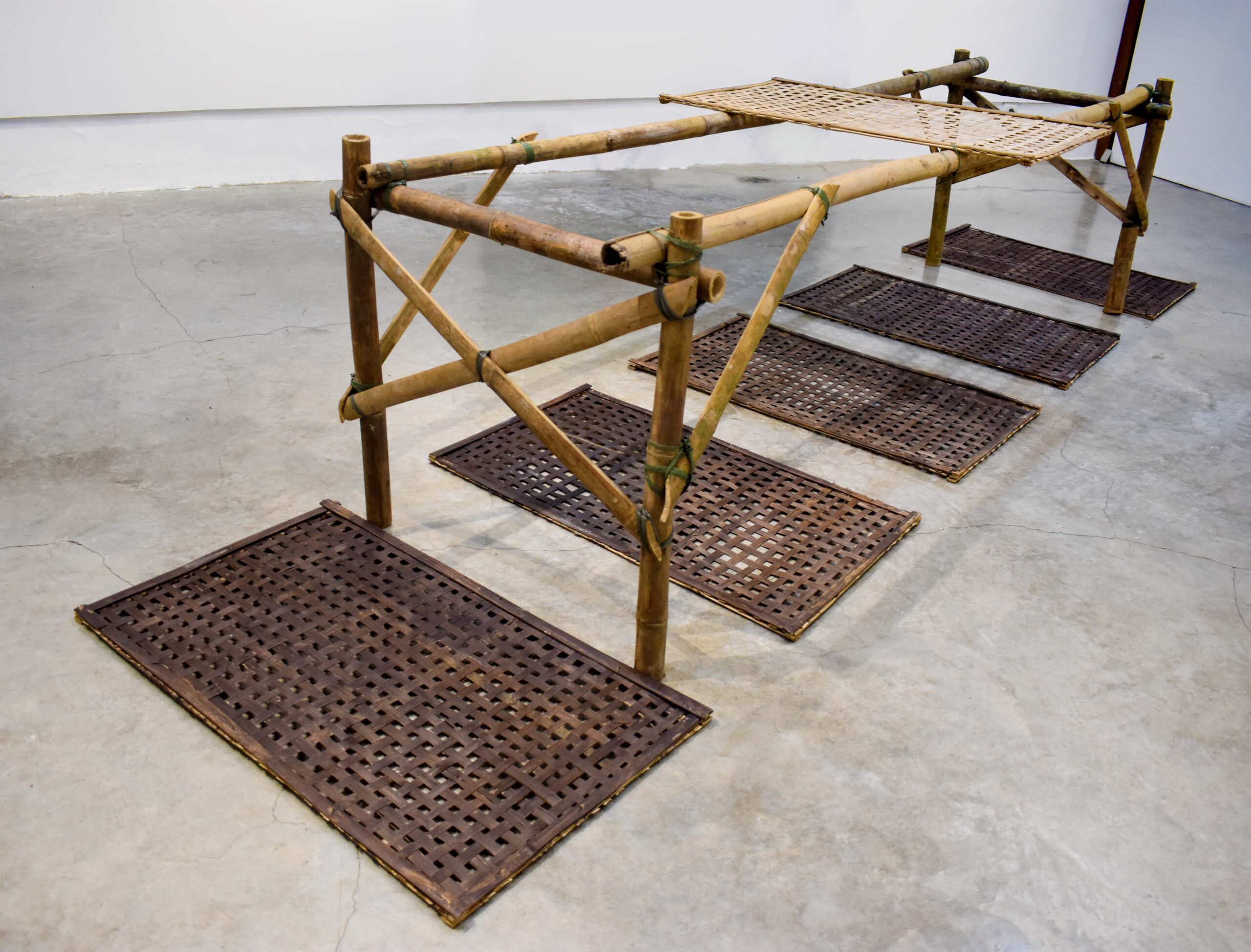
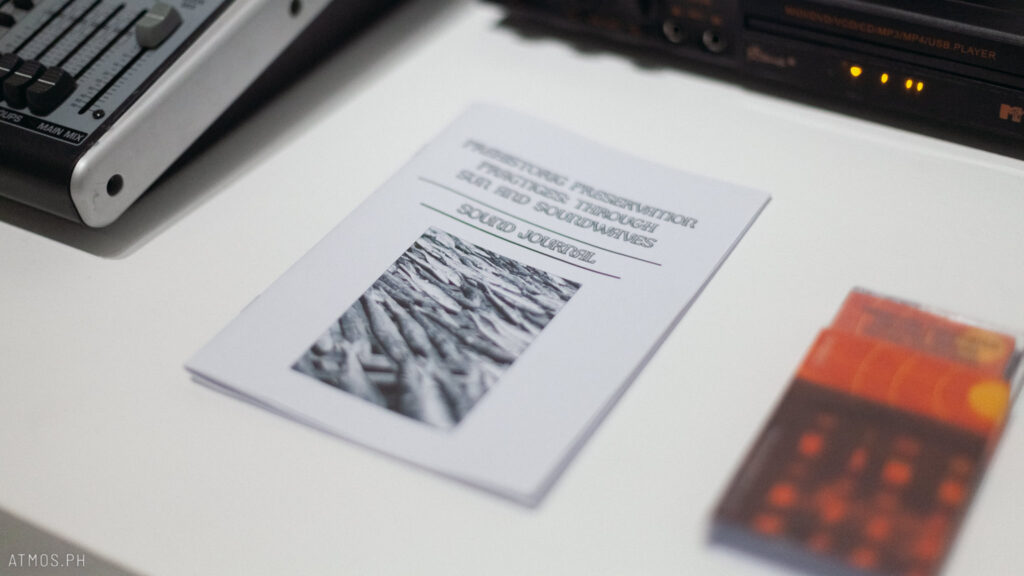
Panagbo also depicts the way of life of Capiznon, which is seemingly entangled with the process of uga-making as shown in the paintings of Sheila Mae Bernaldez, Chariline Bigbig, Clinton Dellota, Rochel Calinao and Kim Raffy Astrolabio.
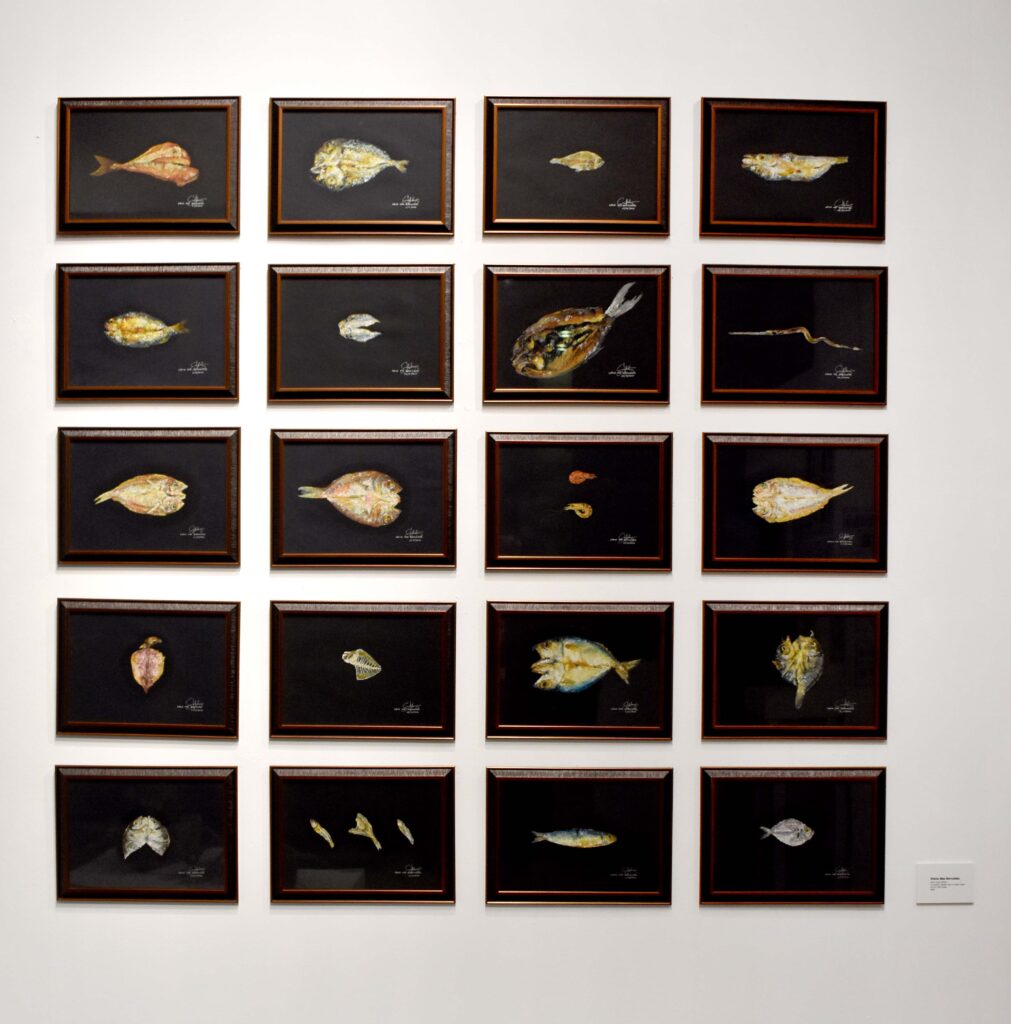
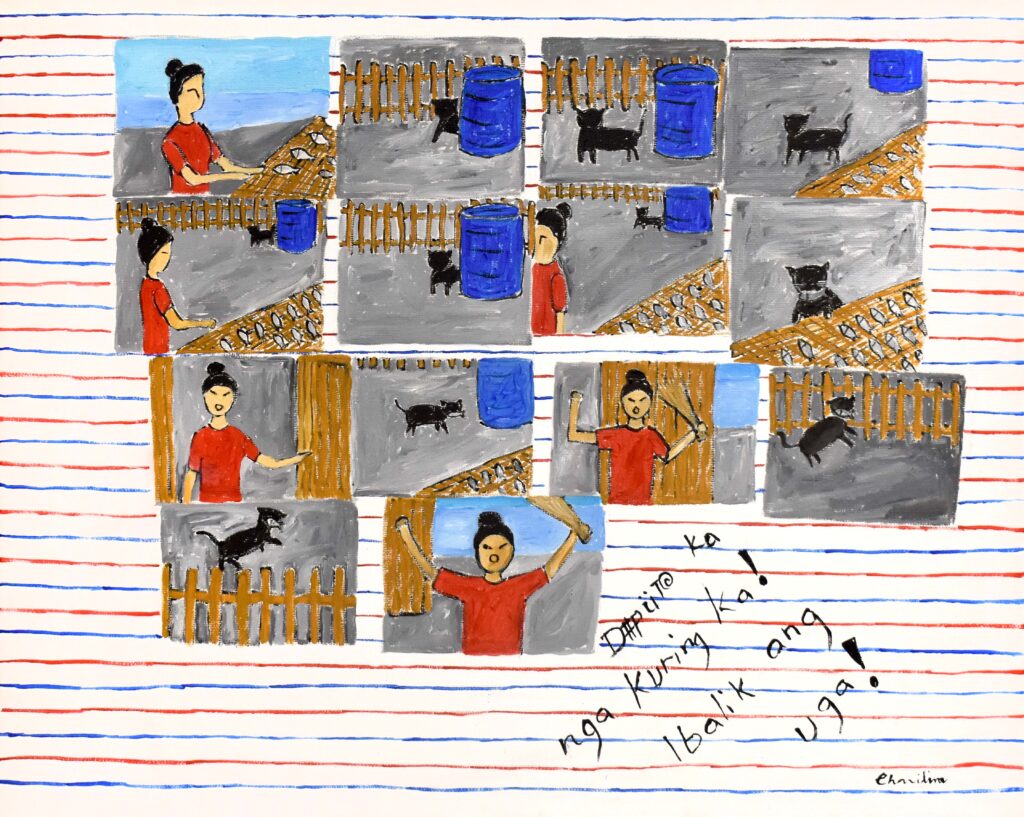
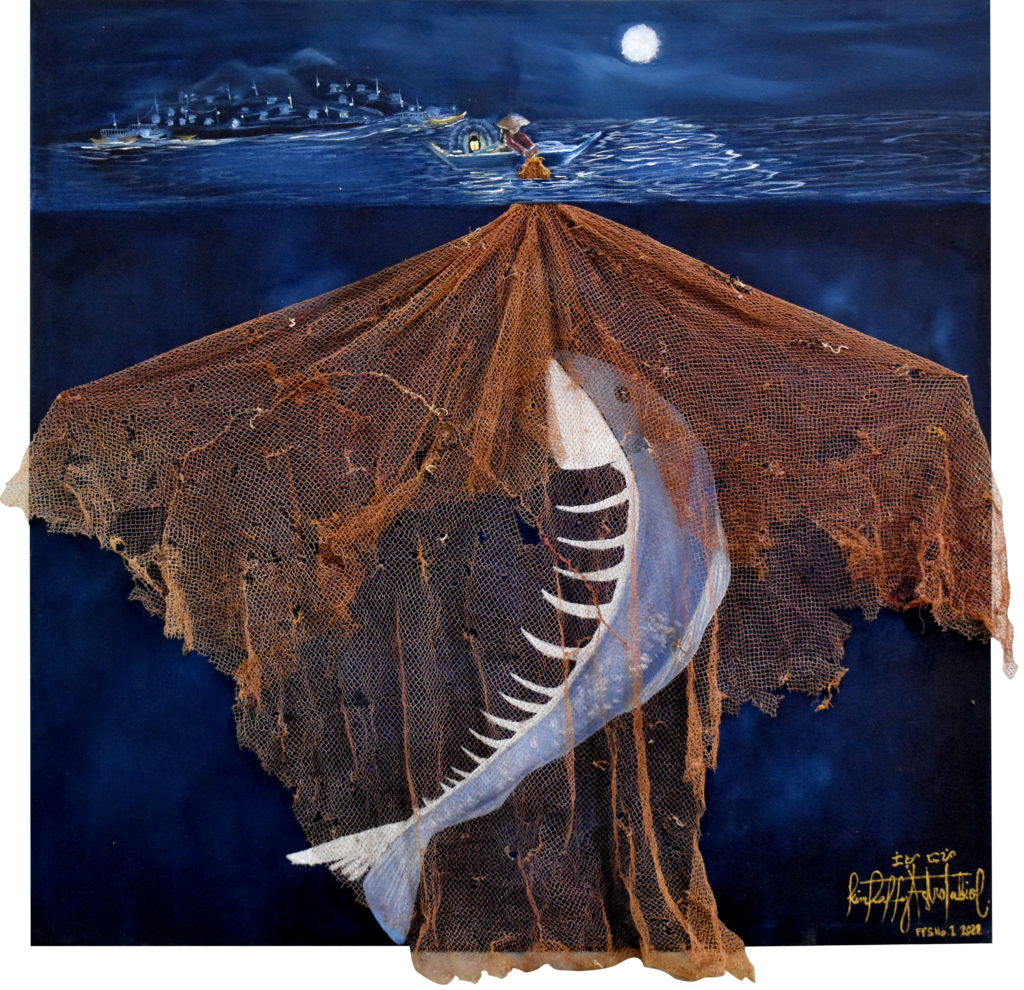

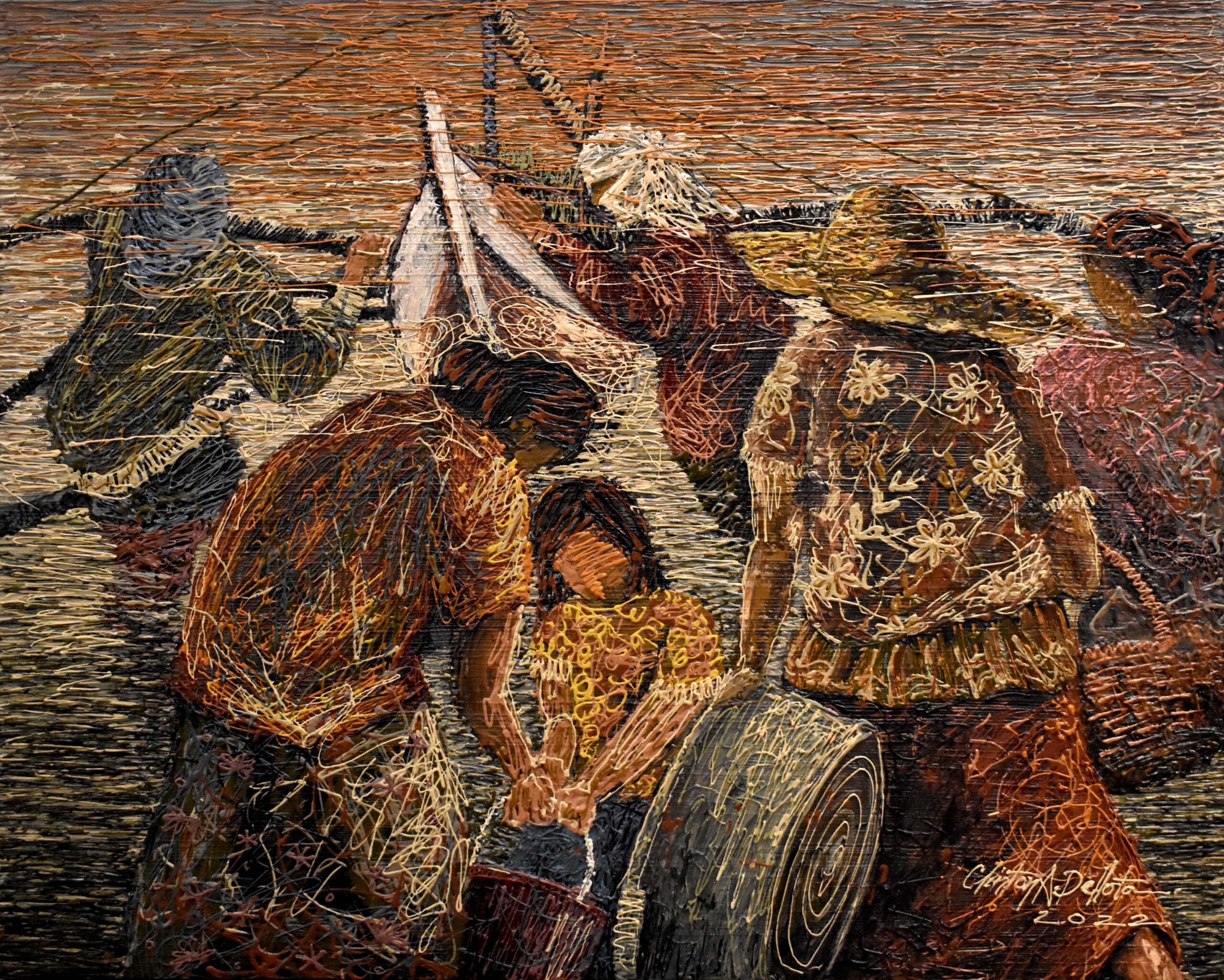
In “Asini Lang!”, Bernaldez introduces the audience to the many types of uga— shrimp, squid, and different kinds of fish. The series of 16 small paintings are painted from life, and on the same scale as each uga. Bernaldez who has a penchant for painting on small canvas was able to mimic the texture on the surface of the uga using oil pastel. The texture usually resulted from the salted fish being left in the sun to dry and having to go through many turns of the bamboo drying bed.
Bigbig painted her observations of the daily lives of the fisherfolks. In one of the paintings, a woman is chasing a cat with the uga in its mouth—a scene that many may be familiar with. With each painting presenting a narrative, the series seemingly makes the audience feel like they are looking at the pages of a creative journal.
Dellota and Astrolabio had different techniques and media in depicting in a seemingly slice-of-life way the many scenes in the sea. Dellota used piping bags to create thick lines of acrylic creating flow and movement in his paintings. Astrolabio on the other hand, added found objects in his paintings to create dimension. While Calinao’s oil painting on canvas of the different ways the community gets together during the different stages of uga-making is reminiscent of modernist paintings of pastoral life, in this case, women and their children working under the sun. The artist depicts harvest through compositions brimming with the many objects such as crates and drying beds that she observed during her visit to the community.
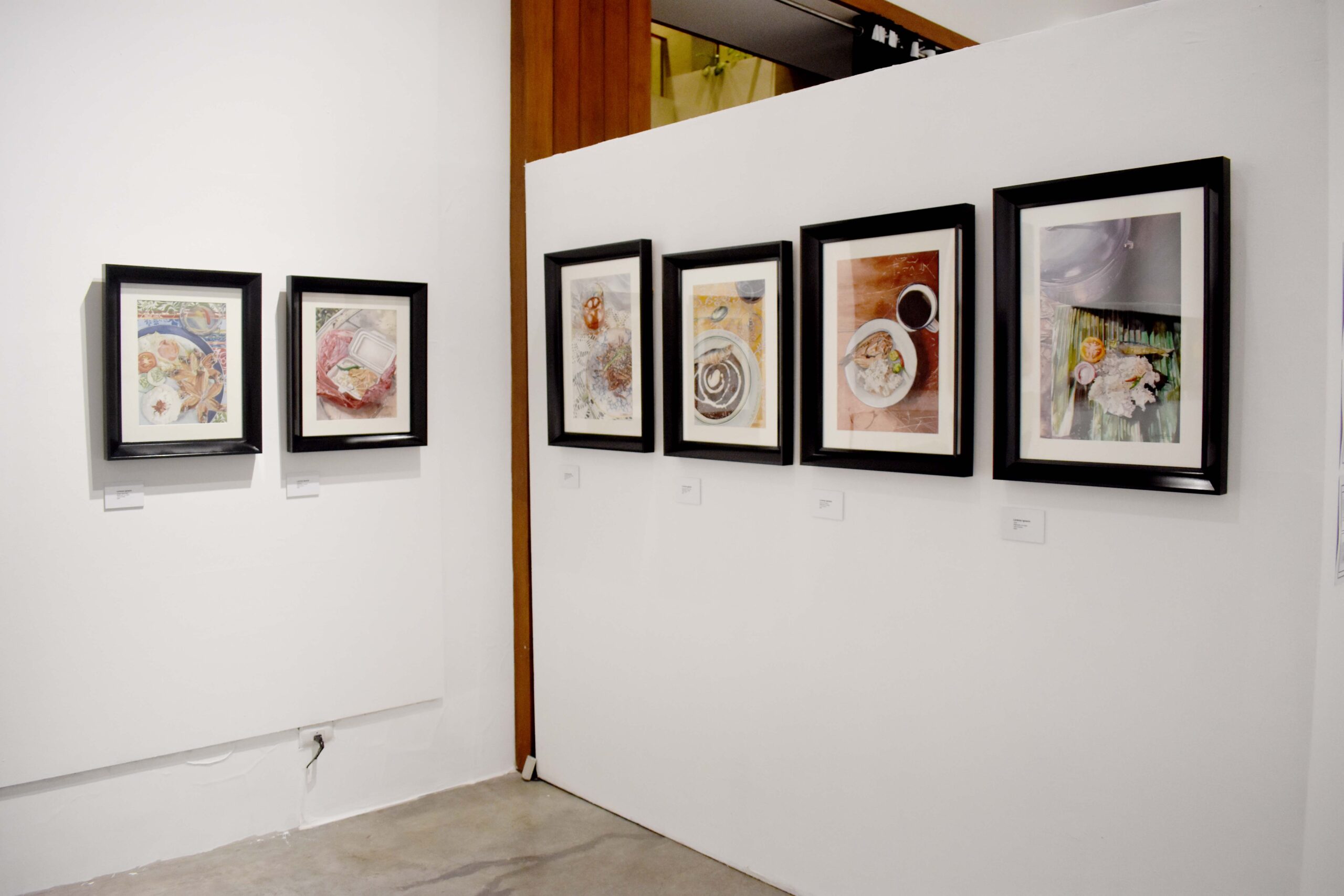
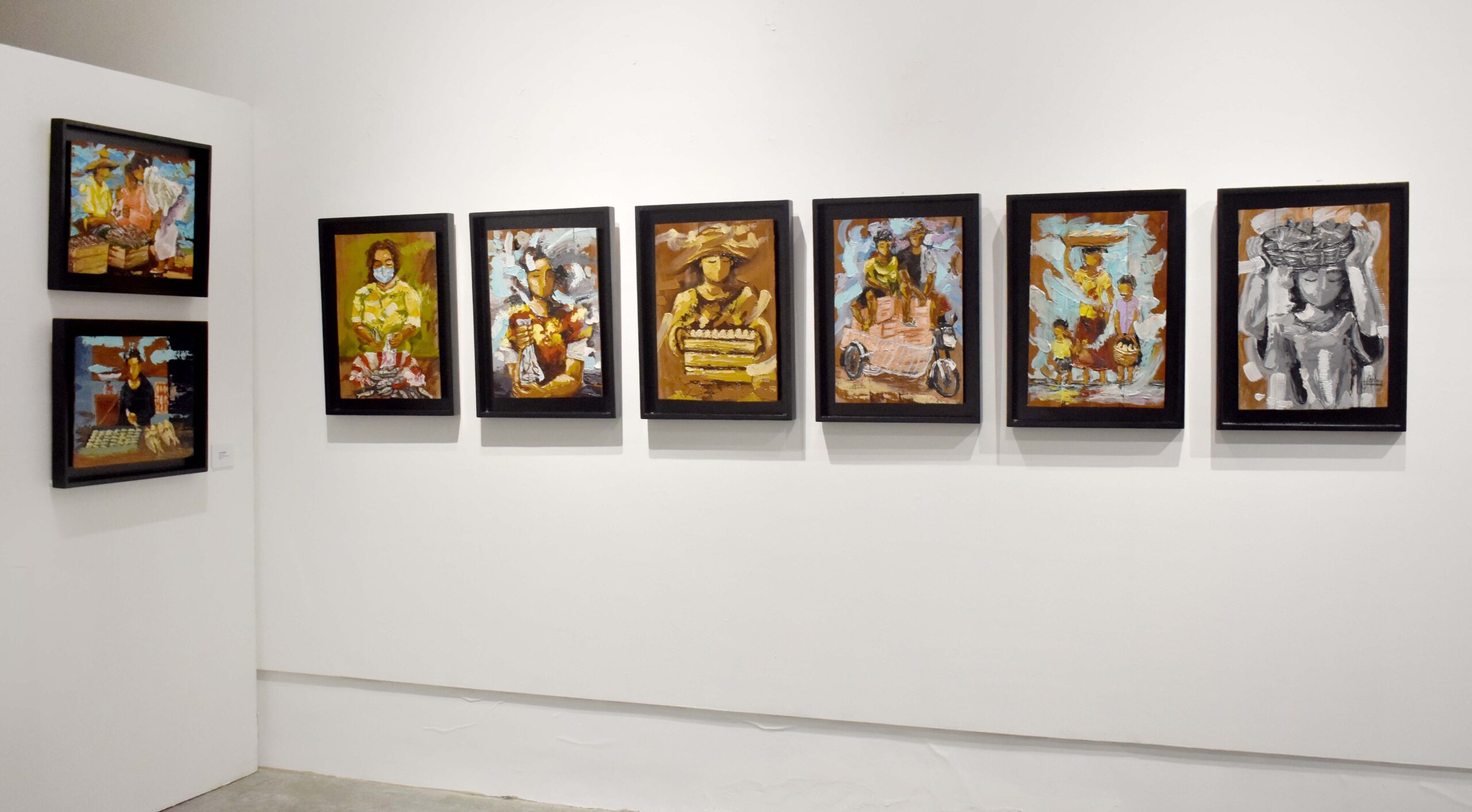
Louie Ignacio, whose background as a chef became a reference in his watercolor paintings, put together different food presentations of uga but with emphasizing its transcendence of different palettes and eventually social classes. One of the paintings depicts dilis and whiskey, the other uga and champurado. The series also features a variety of pairings, one painting features uga on expensive utensils and another in a styrofoam box wrapped in cellophane plastic. In his “Way of Life” series, Lloyd Develos pays tribute to the vendors by painting a portrait, most of them in close shots to give the viewer a closer look at their faces rendered in the artist’s own expressionist style. Develos used uga boxes as the canvas for this series.
Somehow, Panagbo gave a view of how an art exhibition can feel when it is guided by a curator and when the artists create from their own experiences. The participating artists provided visibility not just of their individual art practices but of the community they are representing.
Panagbo: Encounters with Tradition is on view at the Iloilo Museum of Contemporary Art’s “Hulot Gallery” until October 21, 2022. The museum is open from 10 AM – 6 PM, Tuesday to Sunday.
A longer version of this review is included in the Iloilo Art Review 2022. Get your copy below.
